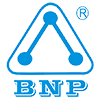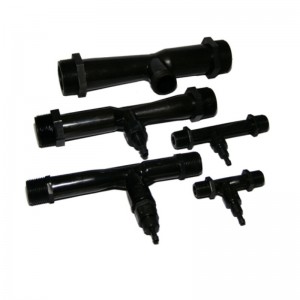The principle of the Venturi ejector is a vacuum obtaining device that uses fluid to transfer energy and mass. It uses a certain pressure of water or gas flow to be ejected through the nozzle and converged at a focus. Because the velocity of the ejected water or gas is very high, the pressure energy is converted into velocity energy, so that the pressure in the suction area is reduced to produce a vacuum. Several high-speed water streams will grab the sucked gas, and then fully mix and compress it through the contraction section of the venturi tube and the throat diameter, and exchange energy through molecular diffusion, and the speed will be balanced. After the expansion section, the speed decreases and the pressure increases, and it is sprayed into the water storage tank (pool) from the outlet when it is greater than the atmospheric pressure, and the non-condensable gas is precipitated. The device that completes the suction function is called a venturi ejector. In this device, two fluids with different pressures mix with each other and exchange energy to form a mixed fluid with a medium pressure. The mixed fluid is divided into a gas (steam) phase, a liquid phase, or a mixture of gas (steam), liquid and solid. Before entering the device, the medium with a higher pressure is called the working medium. The working medium flow is called the working fluid. The working fluid comes out of the nozzle at a very high speed, enters the receiving chamber of the ejector, and takes away the medium with a lower pressure before the ejector. The fluid taken away is called the ejector fluid. Usually in the ejector, the potential energy or thermal energy of the working fluid is initially converted into kinetic energy. Part of the kinetic energy of the working fluid is transferred to the ejector fluid. In the process of flowing along the ejector, the speed of the mixed fluid gradually becomes balanced, so the kinetic energy of the mixed fluid is reversely converted into potential energy or thermal energy. The working medium fluid and the ejection medium fluid enter the mixing chamber to balance the speed, usually accompanied by an increase in pressure. The fluid comes out of the mixing chamber and enters the diffuser, and the pressure will continue to rise. At the outlet of the diffuser, the pressure of the mixed fluid is higher than the pressure of the ejection fluid when entering the receiving chamber. Increasing the pressure of the ejection fluid without directly consuming mechanical energy is the most important and fundamental performance of the ejector. Due to this property, in many technical departments, the use of ejectors is more likely to obtain simpler and more reliable technical solutions than mechanical boosting equipment (compressors, pumps, blowers and induced draft fans, etc.). In addition to its own simple structure, the system connecting the ejector to various equipment is also simple, and the manufacturing is not complicated. It is widely used in engineering. Among them, in the field of power engineering technology, it is mainly used for power generation, waste gas waste heat heating devices, refrigeration, and transportation of solid granular objects.
Advantages of Venturi ejector
1 Use high-pressure steam to extract low-pressure and normal-pressure steam, so as to reach the required pressure at the outlet of the ejector compressor (of course, the outlet pressure has a certain range, that is, the pressure increase of low-pressure and normal-pressure steam has a certain limit) This equipment replaces part of the function of the pressure reducing valve and also achieves the purpose of energy saving.
2. There are no rotating parts in the equipment, and basically no maintenance is required after installation.
3. The equipment is small and easy to install.
4. The equipment is self-controlled and does not require manual operation after one-time setting.
Disadvantages of Venturi ejector
1. There are certain requirements for steam source and extraction of low-pressure and normal-pressure steam.
2. There is a certain range for the pressure increase of low-pressure and normal-pressure steam. If the optimal ejection coefficient is exceeded, the efficiency of the equipment will be greatly reduced.
3. There are certain requirements for working conditions (this is the main reason why equipment selection cannot be provided, and each machine is designed and manufactured.
4. High design and manufacturing precision requirements (it cannot be changed after manufacturing is completed, and low design and manufacturing precision affects the use effect).
Post time: Jun-24-2024



